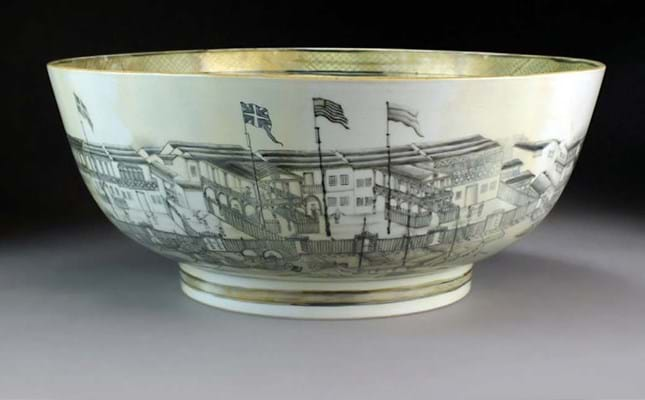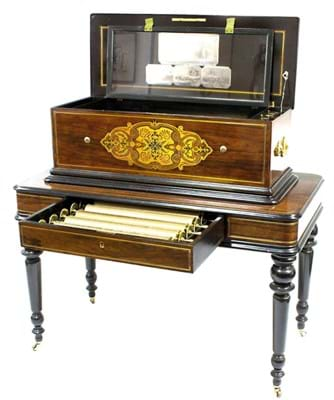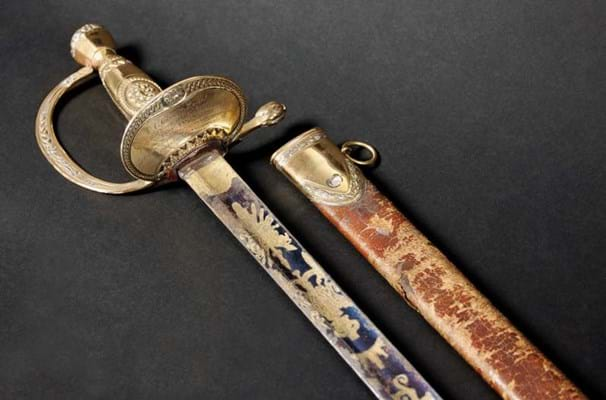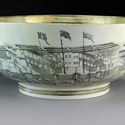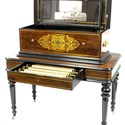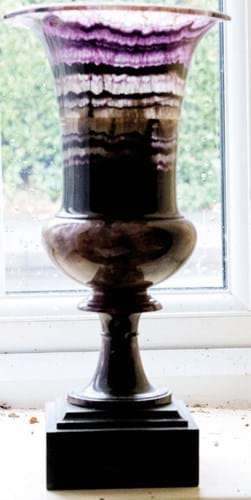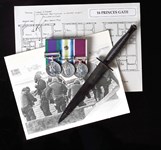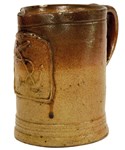A full tank in the Volvo, a couple of tax-deductible nights ahead in a country pub, bidding against locals wanting a souvenir of the big house for pieces needing a little TLC that had been in the same elegant property for a century and more…
The heydays of on-site country house contents sales have been gone these 30 years and more, but the lure of the name remains.
The 1270 lots offered at Chorley’s (20% buyer’s premium) Country House Sale at Prinknash Abbey on July 18 proved, said the auctioneers, that “there is still a market for traditional country house contents”.
This remains true even when, as at the Gloucestershire sale, the lots have been garnered from different country houses.
A typical mix of quality and prices was offered, but a 78% selling rate reflected the enthusiasm of bidders and a total just shy of £295,000 underlined that some real quality was on offer.
One departure from a typical old-fashioned country house sale was the lack of ‘sleepers’ – the auctioneers were well aware of what they were offering.
Star was the 17th century Flemish ebony and tortoiseshell cabinet inset with 13 oils-on-copper paintings of mythological scenes which sold on its lower estimate at £20,000 (see ATG No 2302).
“The heydays of on-site country house contents sales have been and gone, but the lure of the name remains
Also selling at the lower end of hopes was a 19th century rosewood musical box with matching stand, by Nicole Frères, Genève. The 3ft 1in (94cm) wide box inlaid with ormolu contained a movement playing six airs on seven cylinders and went to the UK trade at £10,000.
Classic pieces from old style country house sales were a very worn and much-repaired Ziegler carpet and a number of edged weapons.
The c.1900, 24ft x 17ft 7in (7.35 x 4.48m) carpet from west Persia sold on the lower £8000 estimate.
Best of the blades was a gold-hilted dress sword presented in 1802 to Lieutenant Colonel George Smith by his brother officers at the end of the Egyptian Campaign. Later knighted, promoted to lieutenant general and King George’s aide-de-camp, he died during a diplomatic mission to Cadiz in 1809 and is remembered on a plaque in the Town Church, St Peter Port, in his native Guernsey.
His sword sold to a private UK buyer at £8500 against an estimate of £3000-5000.
(See also Art Market for details of paintings from Chorley’s sale).
Across the counties
Even for Shropshire lads, on-site country house sales are now pretty much the land of lost contents but Shrewsbury auction house Halls (20% buyer’s premium) could point to the 430 lots in its July 19 ‘country house sale’ having been ‘sourced from houses large and small across the three counties of Gloucestershire, Worcestershire, Herefordshire’.
“A series of excellent results in the furniture section was particularly pleasing,” said auctioneer Jeremy Lamond, pointing to the success of a mid-18th century mahogany lowboy and a 19th century Empire-style marble topped commode.
The 2ft 4in high x 2ft 6in wide (71 x 76cm) lowboy with crossbanded top and brass swing handles to the three drawers more than doubled top hopes, selling at £4200. The 2ft 9in (84cm) tall, three-drawer commode with marquetry decoration went further above expectations, taking £3800 against a £200-300 estimate.
However, the success of the sale really lay among the 90 Chinese lots – two stars which between them accounted for 40% of the day’s £330,000 total.
One was the 22in (55cm) tall Qing bottle vase with Yongzheng mark which, despite considerable damage, went to an Asian buyer at £150,000 and was illustrated and discussed in ATG No 2302.
The other was the 18th century export punchbowl illustrated on the opposite page which had come into the saleroom on a valuation day.
The 14¼in (36.5cm) diameter bowl was decorated en grisaille with a continuous monochrome scene of the Hongs along the Pearl River at Canton with the national flags of Western nations identifying each place of business. A significant plus was the inclusion of the Stars and Stripes in what were the early days of the USA.
However, the bowl had been dropped and smashed at some point and given what Lamond described as ‘a passable repair’, leaving him and Oriental specialist Alexander Clement with an estimating problem.
“Aim too high and the buyers will see only the estimate and the damage; too low and the significance of the bowl would be lost,” said Lamond. “In the event we arrived at a relatively healthy £3500-4000.”
Widespread international interest boded well, but bidding on the day was initially slow before phone rivals stepped in and moved things along. The bowl went to a London dealer at £27,000.
Hall together in Etwall
Although lacking any high-price stars, the country house sale at Hansons (17.5% buyer’s premium) at the Etwall rooms on July 24 came closest to the old meaning of the title comprising, as it did, the entire contents of The Old Hall, near Melton Mowbray.
It also generated old-style interest.
“This sale showed the desire to own items from a quintessentially English country house has enduring appeal – especially among Americans and Canadians, who flocked to place bids online,” said auctioneer Charles Hanson.
One Canadian buyer was particularly active among the garden statuary pieces, taking a pair of stone Tuscan columns with cushion moulded capitals at a top-estimate £400 and an 18th-century style stone bust of a bare-breasted Bacchanalian woman, with grape headdress, at £520.
Top-seller was a 12in (30cm) tall George III Blue John campana urn vase. The multi-sectional, horizontally banded vase on stepped black marble base went to a private UK buyer comfortably above estimate at £2900.


